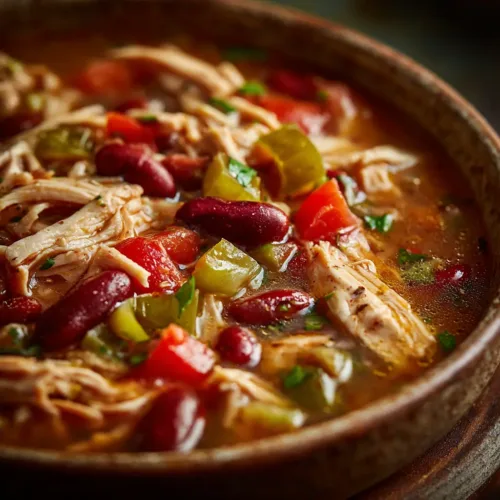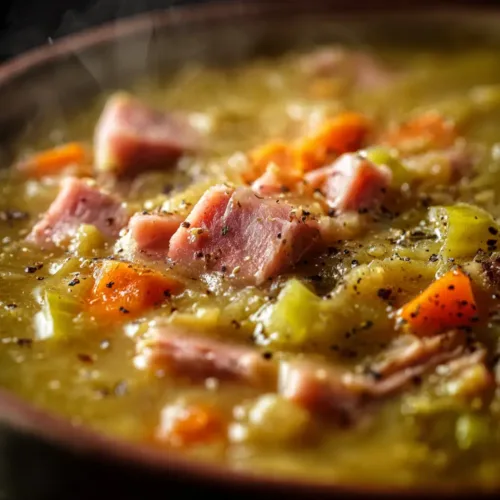Recipe Overview
Here’s Why You’ll Love This Sandhill Crane Recipe
Hey there, friend! Ever wondered what to do with sandhill crane? Maybe you’re a seasoned hunter looking for new ways to enjoy your harvest, or perhaps you’re just curious about trying something a little different. Well, you’re in the right place! This sandhill crane recipe is all about making delicious, comforting food without any fuss. We’re talking simple steps, everyday ingredients, and a result that’s sure to warm you from the inside out. Perfect for a cozy family dinner or a special meal with friends, this recipe is designed to be easy and enjoyable, even if you’re just starting out in the kitchen. Let’s get cooking and discover just how tasty sandhill crane can be!
Ready to dive into a recipe that’s both rewarding and wonderfully straightforward? Let’s get started and make something truly special together!
Printable Recipe Card: Your Easy Sandhill Crane Guide!
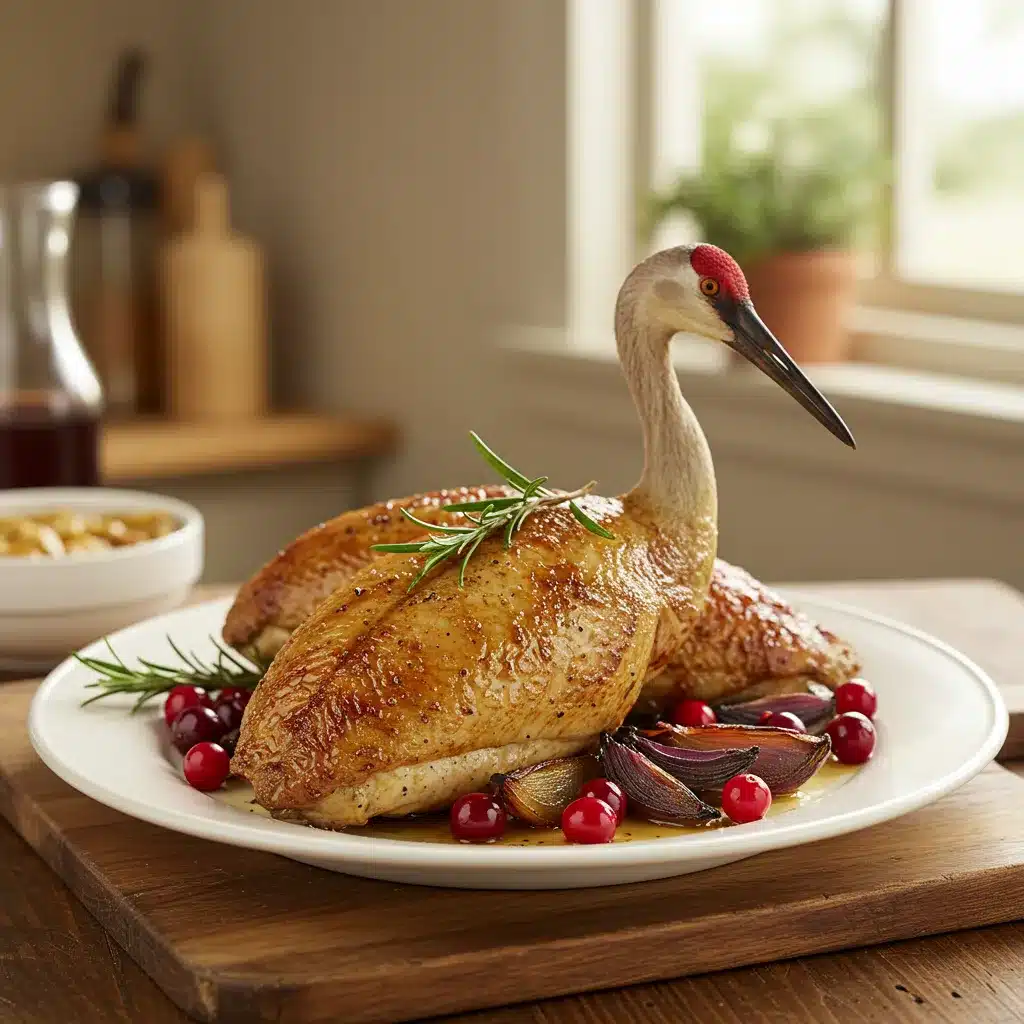
Simple & Cozy Sandhill Crane Recipes – Perfect for a Hearty Meal
Method
- First, pat your sandhill crane meat cubes dry with paper towels. Season them generously with salt and pepper. In a large Dutch oven or heavy-bottomed pot, heat olive oil over medium-high heat. Once the oil is shimmering, add the crane meat in batches and sear each side for about 2-3 minutes until nicely browned. Remove and set aside.Tip: Searing in batches prevents steaming, giving a richer flavor.
- In the same pot, reduce heat to medium. Add chopped onion, carrots, and celery. Sauté for 5-7 minutes until softened. Add minced garlic, dried thyme, and dried rosemary. Cook for another minute until fragrant.Tip: Sautéing vegetables and herbs builds a flavorful base.
- Sprinkle all-purpose flour over vegetables and cook for 1 minute, stirring. Stir in tomato paste and cook for 1 minute. Gradually pour in beef broth and red wine (if using), scraping up browned bits. Add bay leaf, and bring to a simmer.Tip: Deglazing the pot adds depth to your sauce.
- Return seared sandhill crane meat to the pot. Ensure meat is mostly submerged. Bring to a simmer, reduce heat to low, cover, and braise for 2-2.5 hours, or until fork-tender. Check and add broth if needed.Tip: Braising low and slow makes the meat tender and flavorful.
- Once crane is tender, remove bay leaf. Taste and adjust seasoning. Simmer uncovered to thicken sauce if needed. Stir in fresh parsley. Serve hot.Tip: Fresh parsley brightens the flavors.
Nutrition
Notes
Tried this recipe?
Let us know how it was!Let’s Gather Our Ingredients for This Sandhill Crane Recipe
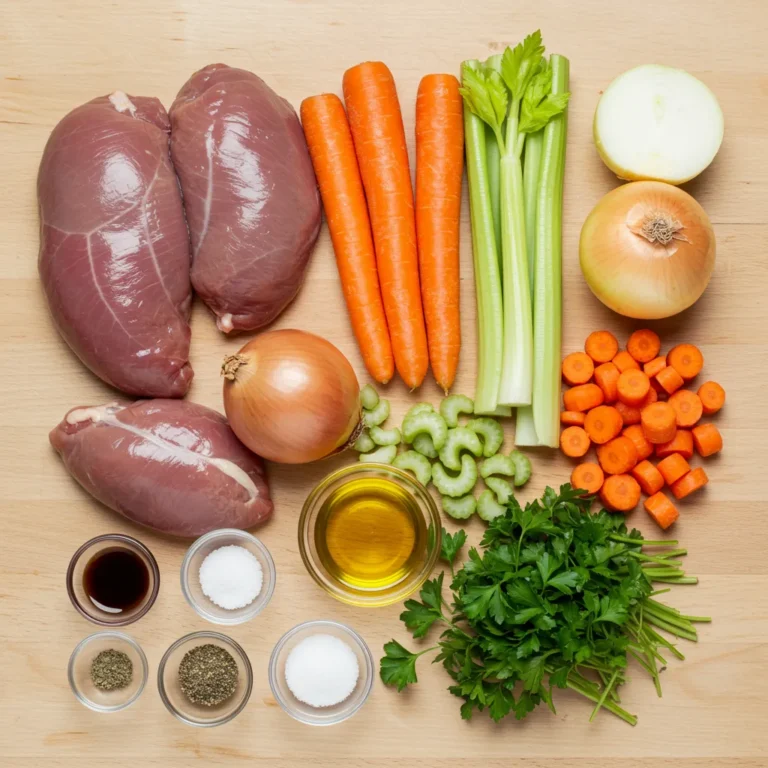
Full Ingredient List
- 2 lbs Sandhill Crane Meat, cut into 1-inch cubes
- 1 large Yellow Onion, roughly chopped
- 2 Carrots, peeled and sliced
- 2 Celery stalks, sliced
- 4 cloves Garlic, minced
- 1 tbsp Olive Oil
- 1 tsp Dried Thyme
- 1 tsp Dried Rosemary
- 1/2 tsp Black Pepper
- 1 tsp Salt, or to taste
- 1 cup Beef Broth
- 1/2 cup Dry Red Wine (optional, but adds depth!)
- 2 tbsp All-Purpose Flour
- 2 tbsp Tomato Paste
- 1 Bay Leaf
- Fresh Parsley, chopped, for garnish
Smart Ingredient Swaps and Easy Substitutions
Sometimes, we don’t have everything on hand, and that’s perfectly okay! Cooking should be flexible and fun. Here are a few easy swaps you can make:
- No Sandhill Crane Meat? No problem! You can use turkey thighs or legs, or even beef stew meat as a substitute. The cooking time might need slight adjustments, but the flavors will still be wonderfully comforting.
- Out of Red Wine? Don’t worry if you skip the red wine. Just replace it with an equal amount of beef broth. For a touch of acidity, a splash of apple cider vinegar or lemon juice can also work wonders.
- No Fresh Celery or Carrots? Frozen mixed vegetables can be a lifesaver! Use about 1 cup of your favorite frozen mix. Just add them in during the last 30-40 minutes of cooking so they don’t get too mushy.
Budget-Friendly Tips and Finding Ingredients
Cooking delicious meals doesn’t have to break the bank! And finding unique ingredients like sandhill crane can be easier than you think with a few clever tips:
- Sourcing Sandhill Crane: If you’re not a hunter yourself, try reaching out to local hunters or farmers in your area. Farmers’ markets or specialty meat shops might also carry game meats, especially during hunting season. Don’t hesitate to ask – you might be surprised!
- Stretch the Meat: To make the recipe go further, add more vegetables! Root vegetables like potatoes, sweet potatoes, or parsnips are fantastic additions that bulk up the meal and add extra nutrients without increasing the meat cost.
- Pantry Staples are Your Friends: We’ve used many pantry staples in this recipe like dried herbs, flour, and tomato paste. Keeping a well-stocked pantry not only saves money but also makes cooking on the fly so much easier. Buy these in bulk when they are on sale to save even more!
Time to Cook! Your Step-by-Step Guide for Sandhill Crane
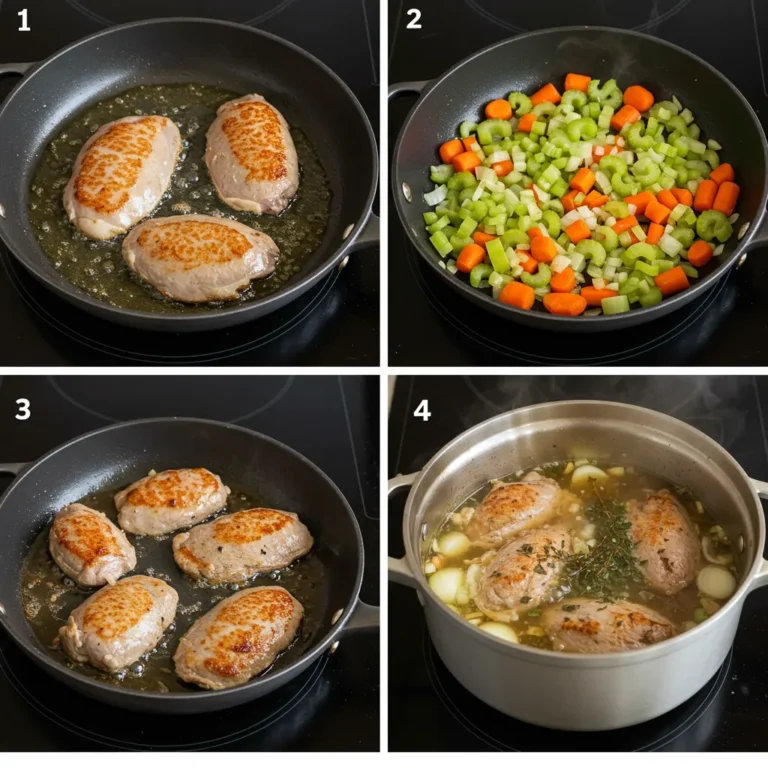
Get Started: Searing the Crane.
First, pat your sandhill crane meat cubes dry with paper towels. This is a simple step, but it’s crucial for getting a good sear! Season them generously with salt and pepper. In a large Dutch oven or heavy-bottomed pot, heat olive oil over medium-high heat. Once the oil is shimmering, add the crane meat in batches, making sure not to overcrowd the pot. Sear each side for about 2-3 minutes until nicely browned. Don’t worry about cooking it through at this stage, we just want that lovely browned exterior for extra flavor. Remove the seared meat and set aside.
Tip: Searing in batches prevents the meat from steaming instead of browning, which gives you a richer, deeper flavor in your final dish. Trust me, it’s worth the little bit of extra time!
Sauté the Aromatics.
In the same pot, reduce the heat to medium. Add the chopped onion, carrots, and celery. Sauté for about 5-7 minutes, until the vegetables start to soften and the onions become translucent. Stir occasionally and make sure they don’t brown too much. Next, add the minced garlic, dried thyme, and dried rosemary. Cook for another minute until fragrant. Your kitchen should be smelling amazing right about now!
Tip: Don’t rush this step! Sautéing the vegetables and herbs releases their flavors, building a delicious base for our sandhill crane recipe.
Build the Sauce.
Sprinkle all-purpose flour over the vegetables and cook for 1 minute, stirring constantly. This helps to thicken the sauce later on. Then, stir in the tomato paste and cook for another minute. Gradually pour in the beef broth and red wine (if using), scraping up any browned bits from the bottom of the pot – these are flavor bombs! Add the bay leaf, and bring the mixture to a simmer.
Tip: Deglazing the pot by scraping up those browned bits is key to adding depth and complexity to your sauce. It’s like unlocking hidden flavors!
Braise the Sandhill Crane.
Return the seared sandhill crane meat to the pot. Make sure the meat is mostly submerged in the liquid. Bring it back to a gentle simmer, then reduce the heat to low, cover the pot, and let it braise for about 2-2.5 hours, or until the crane meat is fork-tender. Check occasionally and add a little more beef broth if the sauce becomes too thick – you want it to be luscious and rich, not dry.
Tip: Braising is all about low and slow cooking. This gentle simmering process breaks down the meat, making it incredibly tender and flavorful. Patience is your friend here!
Finishing Touches and Serve.
Once the sandhill crane is tender, remove the bay leaf. Taste and adjust seasoning with additional salt and pepper as needed. If you find the sauce is a bit thin, you can simmer it uncovered for the last 15-20 minutes to thicken it up to your desired consistency. Finally, stir in some fresh parsley for a pop of freshness. Serve hot and enjoy every comforting bite!
Tip: Fresh parsley not only adds a beautiful garnish but also brightens up the flavors of the dish. Don’t skip it!
Our Best Tips & Tricks for a Perfect Sandhill Crane
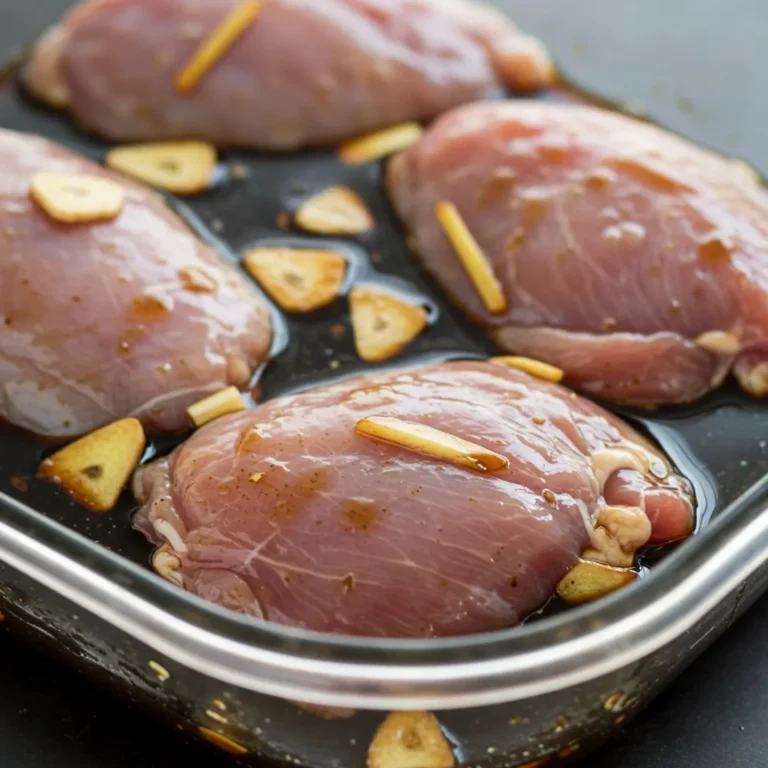
- Marinate for Extra Tenderness: For even more tender crane meat, consider marinating it for a few hours or overnight before cooking. A simple marinade of red wine, olive oil, garlic, and herbs will work wonders.
- Don’t Overcrowd the Pot When Searing: Overcrowding lowers the pan temperature and causes the meat to steam instead of sear. Sear in batches to get that perfect brown crust on all sides.
- Low and Slow is Key: Sandhill crane benefits from long, slow cooking. Braising at a low temperature ensures the meat becomes melt-in-your-mouth tender and absorbs all the wonderful flavors of the sauce.
- Taste and Adjust Seasoning: Always taste your dish before serving and adjust the seasoning as needed. A little extra salt or pepper can make a big difference in bringing out the flavors.
- Rest the Meat (If Roasting Whole Crane): If you are roasting a whole sandhill crane (though this recipe is for cubed meat), remember to let it rest for 10-15 minutes after cooking, tented with foil. This allows the juices to redistribute, resulting in more tender and flavorful meat.
What to Serve with Your Delicious Sandhill Crane: Perfect Pairings

This hearty sandhill crane recipe is fantastic on its own, but pairing it with the right sides can elevate your meal to the next level of cozy comfort! Here are some of my favorite pairings:
- Creamy Mashed Potatoes: Classic and comforting, mashed potatoes are the perfect bed for the rich braising sauce. They soak up all that delicious flavor!
- Buttery Egg Noodles: Wide egg noodles tossed with butter and a sprinkle of parsley are another wonderful option for soaking up the sauce.
- Roasted Root Vegetables: Keep the veggie theme going with roasted root vegetables like carrots, parsnips, and potatoes. Their natural sweetness complements the savory crane beautifully.
- Crusty Bread: Don’t forget some crusty bread for soaking up every last drop of that amazing sauce. Sourdough or French bread would be perfect.
- Green Salad with Vinaigrette: For a lighter contrast, a fresh green salad with a tangy vinaigrette cuts through the richness of the braise and adds a refreshing element to your meal.
How to Store and Reheat Your Delicious Sandhill Crane

Lucky you if there are leftovers! This sandhill crane recipe tastes even better the next day as the flavors have more time to meld together. Here’s how to store and reheat it to keep it just as delicious:
- Storing: Once your sandhill crane braise has cooled down to room temperature, transfer it to an airtight container. It will keep wonderfully in the refrigerator for up to 3-4 days. For longer storage, you can freeze it for up to 2-3 months. Make sure to use freezer-safe containers or bags and label them with the date.
- Reheating on the Stovetop: This is my preferred method for reheating. Pour the desired amount of sandhill crane braise into a pot or skillet. Add a splash of beef broth or water if needed to loosen the sauce. Heat over medium-low heat, stirring occasionally, until heated through. This usually takes about 10-15 minutes.
- Reheating in the Oven: Preheat your oven to 350°F (175°C). Place the sandhill crane in an oven-safe dish, adding a little beef broth or water to keep it moist. Cover with foil and bake for about 20-25 minutes, or until heated through.
- Reheating in the Microwave: For a quick reheat, microwave individual portions on medium power in a microwave-safe dish, covered, for 2-3 minutes, stirring halfway through. Be careful not to overheat, as the meat can become dry.
- Important Tip: Always ensure your leftover sandhill crane is heated to an internal temperature of 165°F (74°C) to ensure food safety. Use a food thermometer to check!
Your Sandhill Crane FAQ: Simple Answers for Confident Cooking

- Q: Where can I find sandhill crane meat?
A: Sandhill crane meat is typically sourced through hunting. If you’re not a hunter, check with local hunters, farmers’ markets, or specialty meat shops, especially during hunting season. Online game meat retailers might also be an option.
- Q: Can I use a slow cooker for this recipe?
A: Yes, you can! Sear the meat and sauté the vegetables as instructed in steps 1 and 2. Then, transfer everything to a slow cooker. Cook on low for 6-8 hours or on high for 3-4 hours, or until the meat is tender. Thicken the sauce at the end if needed by mixing a tablespoon of cornstarch with a tablespoon of cold water and stirring it into the slow cooker during the last 30 minutes of cooking.
- Q: How do I know when the sandhill crane is cooked through?
A: Sandhill crane is best when braised until fork-tender. Use a fork to gently pull apart the meat – it should shred easily when it’s done. If you are using a meat thermometer, ensure the internal temperature reaches at least 165°F (74°C) for food safety, though braising will typically take it well beyond this temperature for optimal tenderness.
- Q: Can I add other vegetables to this recipe?
A: Absolutely! Feel free to add other root vegetables like potatoes, sweet potatoes, parsnips, or turnips. Mushrooms, peas, or green beans can also be added during the last 30-40 minutes of cooking.
- Q: What if I don’t have red wine?
A: No red wine? No problem! Simply substitute with an equal amount of beef broth. For a bit of extra flavor, you can add a splash of balsamic vinegar or Worcestershire sauce for depth.
Time to Savor Your Delicious Sandhill Crane and Share the Joy
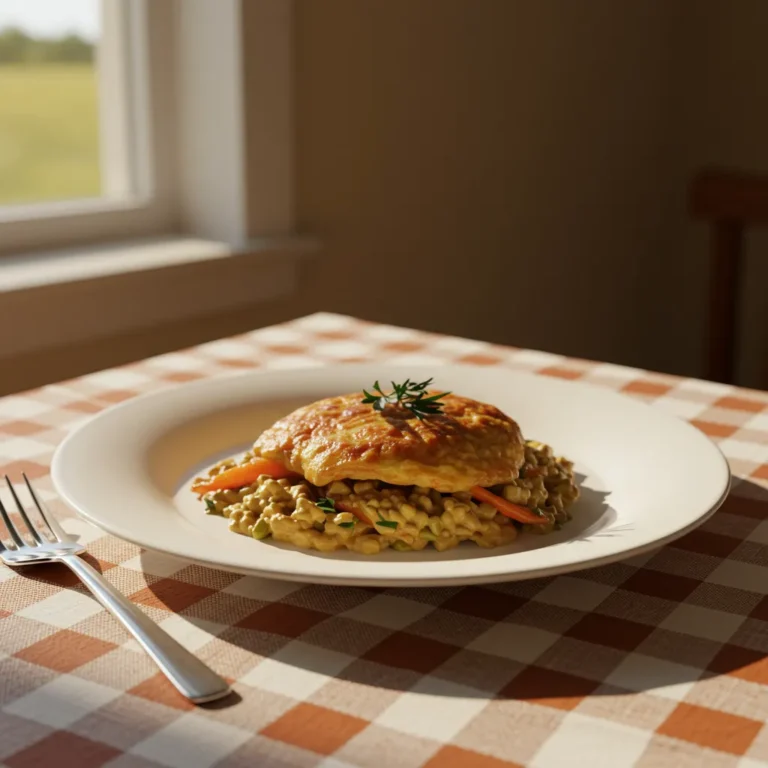
Congratulations, you’ve just created a wonderfully comforting and flavorful sandhill crane dish! This simple yet hearty recipe is perfect for those cozy evenings when you crave something truly satisfying and delicious. Cooking doesn’t have to be complicated, and we hope this recipe has shown you just how easy it can be to create a memorable meal.
We’d absolutely love to see your culinary creations! Don’t forget to rate this recipe below, share your photos on social media using #FingerLickingRecipes, and join our friendly community of home cooks in the comments below. Let’s inspire each other and celebrate the joy of cooking together!
Follow us for more easy and delicious recipes on Instagram and Pinterest. Happy cooking!











